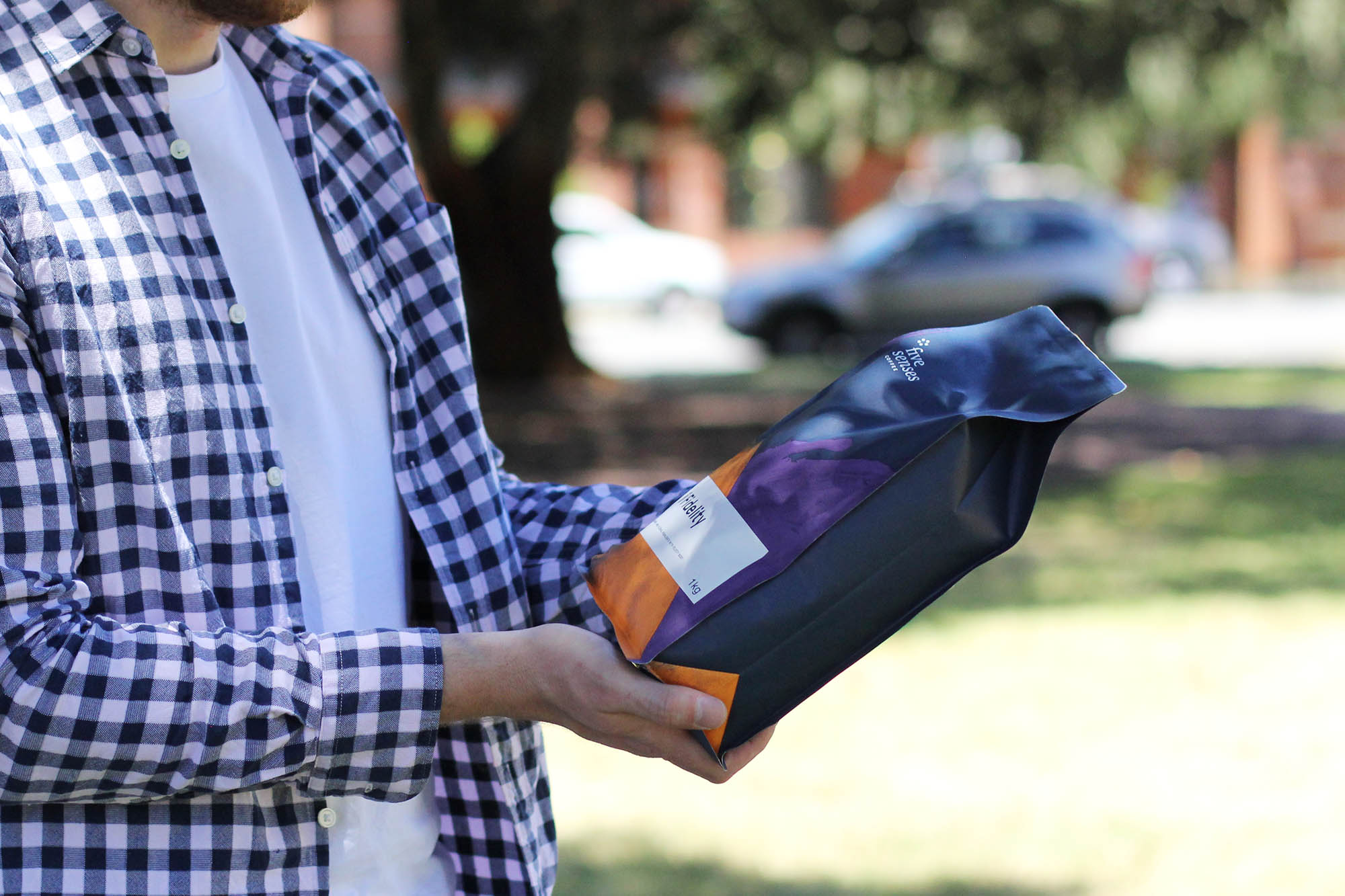I have to admit, I was a little nervous about this latest experiment at the Five Senses Barista Academy. When we come across common myths that exist in the coffee industry, we don’t normally subscribe to them until we have tested them thoroughly. This one though had slipped through the cracks. I don’t think I have ever properly tested (or if I have, at best it has been fleeting) the issue of why we keep coffee in the cupboard.
You may have heard the original myth that you should always keep your coffee in the fridge.
This myth has been around since the inception of the box that cools. This, of course, is the wrong thing to do and normally generates a ‘shocked moment’ in the myth busting Introduction class at the Barista Academy. Having said that though, I can’t really remember ever actually tasting the resulting differences side by side in controlled circumstances. So we decided to remedy this error and test it out properly.
The purpose of our test was to view the quality differences that resulted from storing three samples of coffee in different ways. All the samples were in sealed bags, they were all of the same coffee (Colombia, Alma Del Huila) and all roasted on the same day. We stored them in the freezer, the fridge and the cupboard (pantry). Then we tasted our samples blind and side-by-side as espresso, long black and flat white. It is important to realise that we were testing for quality, so the bag was sealed. Normally, if you store your coffee in the fridge or freezer, it is supposedly to prolong the life of the coffee and the packet will have been opened.
The Results!
We dialled in our samples, labelled ‘A’, ‘B’ and ‘C’ and started tasting — and the results were much more extreme than we could have anticipated! Sample C was clearly the best, followed by B and then A. So how did the results look?
A) Thin, pale pour. Very light body, unpleasant acidity, very low sweetness, no distinguishing characters and nearly flavourless through milk.
B) Definitely poured in the most interesting fashion. It started quite thin and finished with an extremely thick stream that blonde abruptly and early. The crema was also extremely thick, looking almost like melted marshmallow on the surface of the liquid. It had a heavy body, very low acidity, and was savoury — with a faint cereal character, low sweetness.
C) C’s crema was definitely the glossiest and had the best colour. It had a medium body with a velvety texture, high sweetness and a pleasant, well balanced acidity.
Interestingly enough, the samples didn’t actually get worse the colder the temperature fell, although this is what I had anticipated. ‘A’ was our fridge sample and clearly the worst (nearly undrinkable), ‘B’ was our freezer sample and, although it wasn’t the best, was surprisingly not as bad as sample ‘A’. ‘C’ was without doubt the best of all three, and the only sample to really retain its sweetness and a pleasant acidity.
What was most interesting about the test though is that if I didn’t know that they were all the same coffee, I would have sworn that we tasted different origins, such was the variation in samples. It really does reinforce the importance of proper storage of coffee, particularly as we’re heading into summer!



